

Partnering with RTI International
Coastal Carolina Riverwatch (CCRW) is proud to partner with RTI International (Research Triangle Institute), an independent research institute dedicated to improving the human condition by turning knowledge into practice. RTI brings together scientists, engineers, and policy experts to tackle pressing environmental and public health challenges around the world. Their expertise in chemical analysis and environmental monitoring has been invaluable to our efforts to understand and address pollution in North Carolina’s waters.
Research Leadership: Dr. Imari Walker-Franklin

Our work with RTI has been led by Dr. Imari Walker-Franklin, an analytical chemist whose work focuses on uncovering contaminants in our waterways. She specializes in analyzing complex environmental samples, like surface waters, sediments, and biological tissues, using advanced tools such as gas and liquid chromatography paired with high-resolution mass spectrometry. These methods allow her to detect and characterize substances of emerging concern, including PFAS, microplastics, and wastewater tracers. Her research focuses on advancing non-target analysis workflows to identify novel contaminants and better understand their impacts on ecosystems. Through CCRW’s partnership with RTI, Dr. Walker-Franklin is applying this expertise directly to the New River, investigating how tire additives and plastic chemicals may affect coastal waters and fisheries.
New River Watershed Restoration Plan
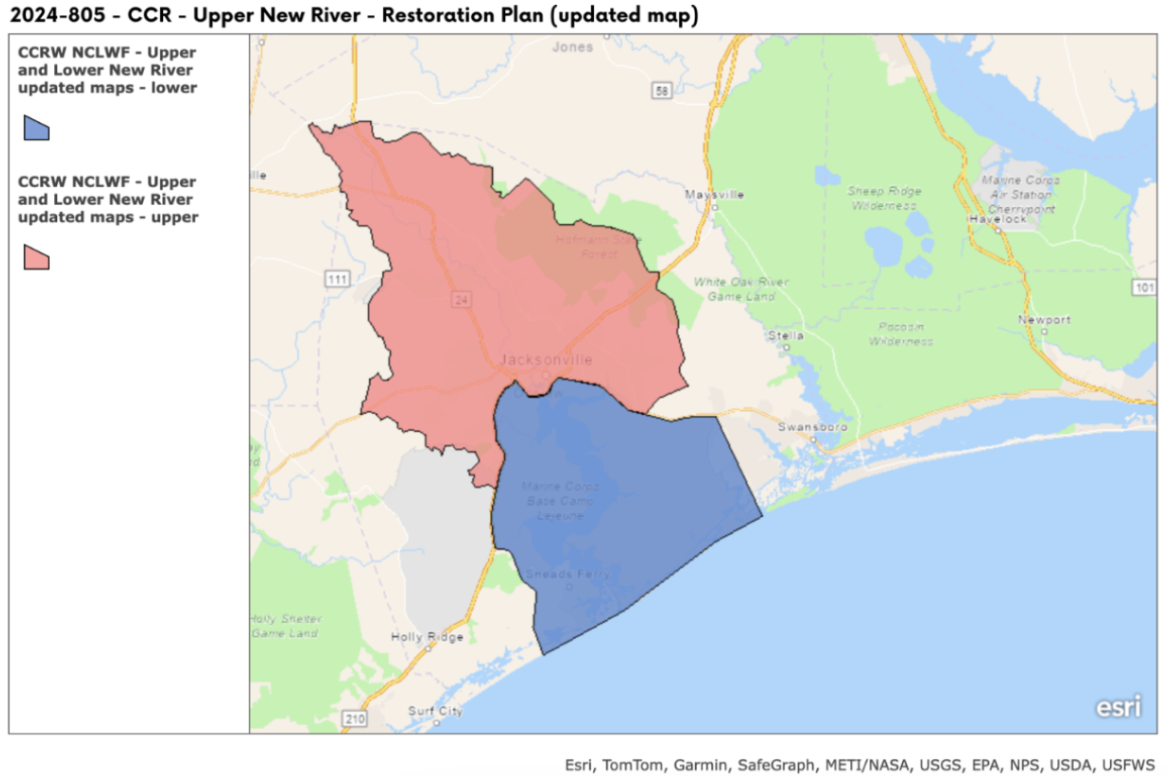
This research builds on the goals outlined in the New River Watershed Restoration Plan (2024–2027), funded by the North Carolina Land and Water Fund. The plan provides a roadmap for enhancing the resilience of the ecosystem against pollution. CCRW’s collaboration with RTI is a critical piece of this work, as understanding the types and sources of pollutants informs long-term strategies for restoration and protection.
The primary interest of this research was 6PPD (N-(1,3-dimethylbutyl)-N′-phenyl-p-phenylenediamine), a chemical additive commonly used in tires to prevent rubber degradation. When tires wear down, 6PPD is released and can wash into surrounding waters. Research has shown that 6PPD can be toxic to aquatic life, making it an important pollutant to monitor in our coastal rivers and estuaries.
2024:
The sampling is focused on roadways that intersect with waters of the New River in Onslow County. So far, we have sampled 6 different locations throughout the middle New River area. Whole water samples were taken from rivers and streams that flowed under roadways, including Beulaville Hwy, Rhodestown Rd, Cow Horn Rd, Lejeune Blvd and Hwy 17 Business.
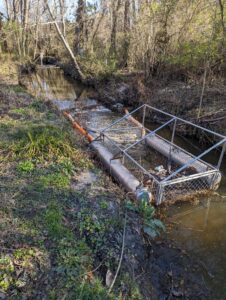 |
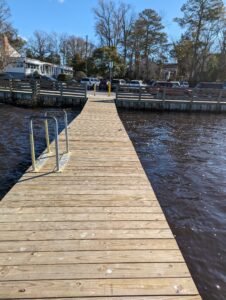 |
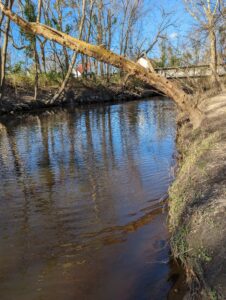 |
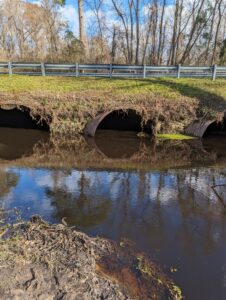 |
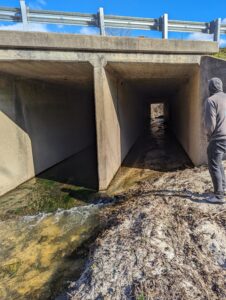 |
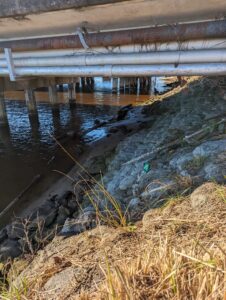 |
Research Results


2025:
Water samples were collected from six different locations, each chosen for their public access points, proximity to roadways, and consistent water depth. All sites were located downstream of active roads, reflecting CCRW’s focus on investigating potential roadway-related pollutants. Because these locations fall within the estuary, they are also influenced by tides, which shape how pollutants move through the system.
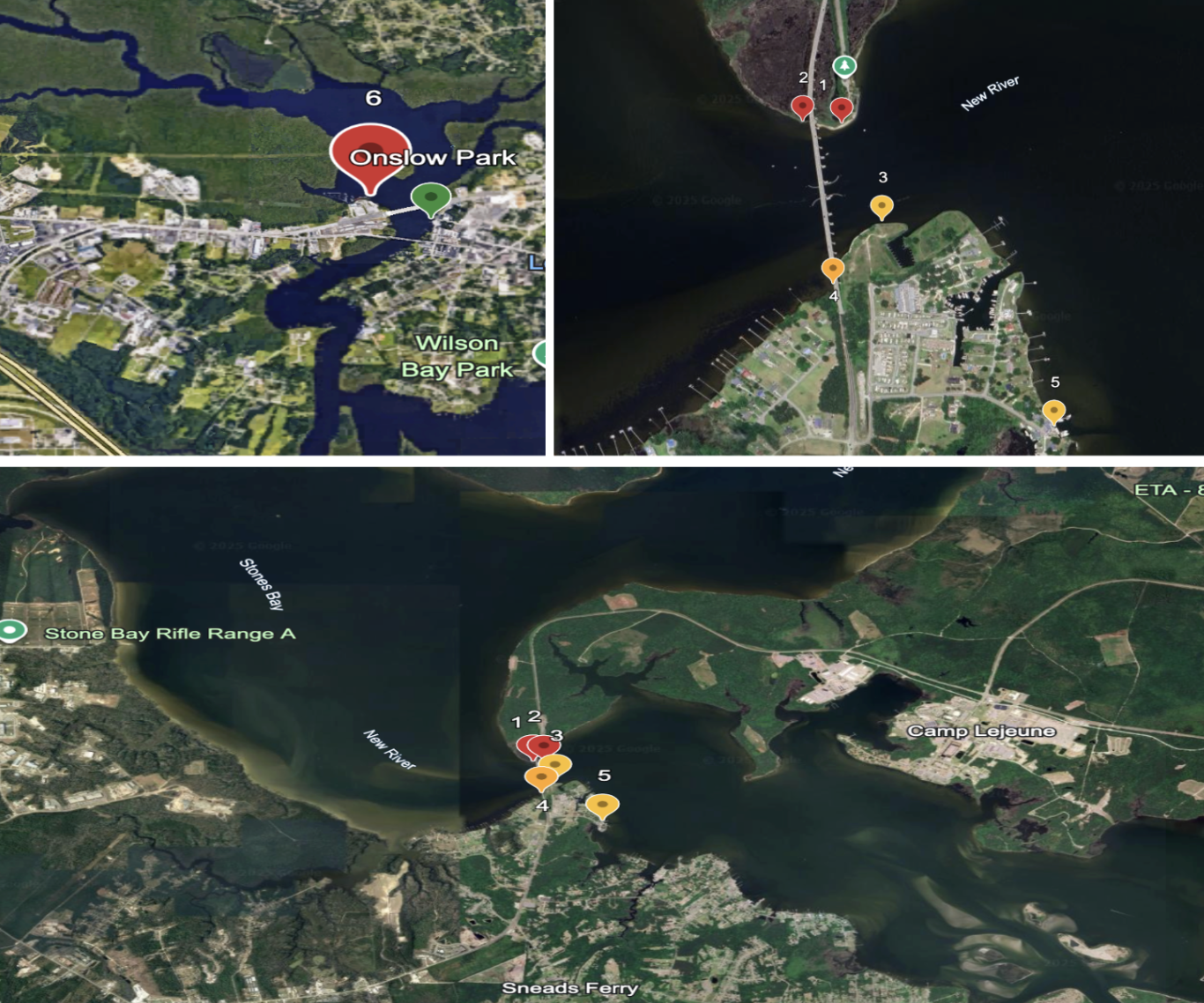
Research Results:
This round (2025) of sampling identified a variety of chemicals beyond 6PPD that are from anthropogenic sources. Locations 1, 2, and 6 have the highest indication of inputs from human use like: wastewater indicators [caffeine, drugs, etc.], plastic additives, and pesticides. Some other interesting and potentially hazardous chemicals include dyes, colorants and a few pesticides (pentachlorophenol).
Indicators of plastic pollution like microfibers from clothes washing (nylon oligomers) and plastic dumping (UV inhibitor transformation products) and tire runoff (diphenylguanidine) are most prevalent in sites 1 and 2.
Initial results suggest that New River water quality should not be of immediate human health concern in waters around Sneads Ferry. Further investigations using chemical standards to better understand these compounds would aid in confidence of identification and provide perspective on risk to fisheries. These results are preliminary and more research is needed to determine why the chemicals are present at higher levels at site 1, 2 and 6, and not at 3, 4 and 5.
This research aligns with CCRW’s Water Quality for Fisheries Program which was developed through collaboration with the coastal commercial and recreational fishing community, water quality researchers, and coastal water quality advocacy organizations.
Through a process of surveying fishers in coastal NC, Industry Working Group meetings and water quality research, Five Water Quality Priorities were identified.
Water Quality Priorities Identified by Coastal North Carolina Fisheries Representatives:
- Agriculture and Factory Farm Runoff
- Stormwater Runoff from Roads, Highways, and Parking Lots
- Industrial Pollutants
- Plastic Pollution
- Municipal Wastewater Treatment Plants and Septic Tanks
